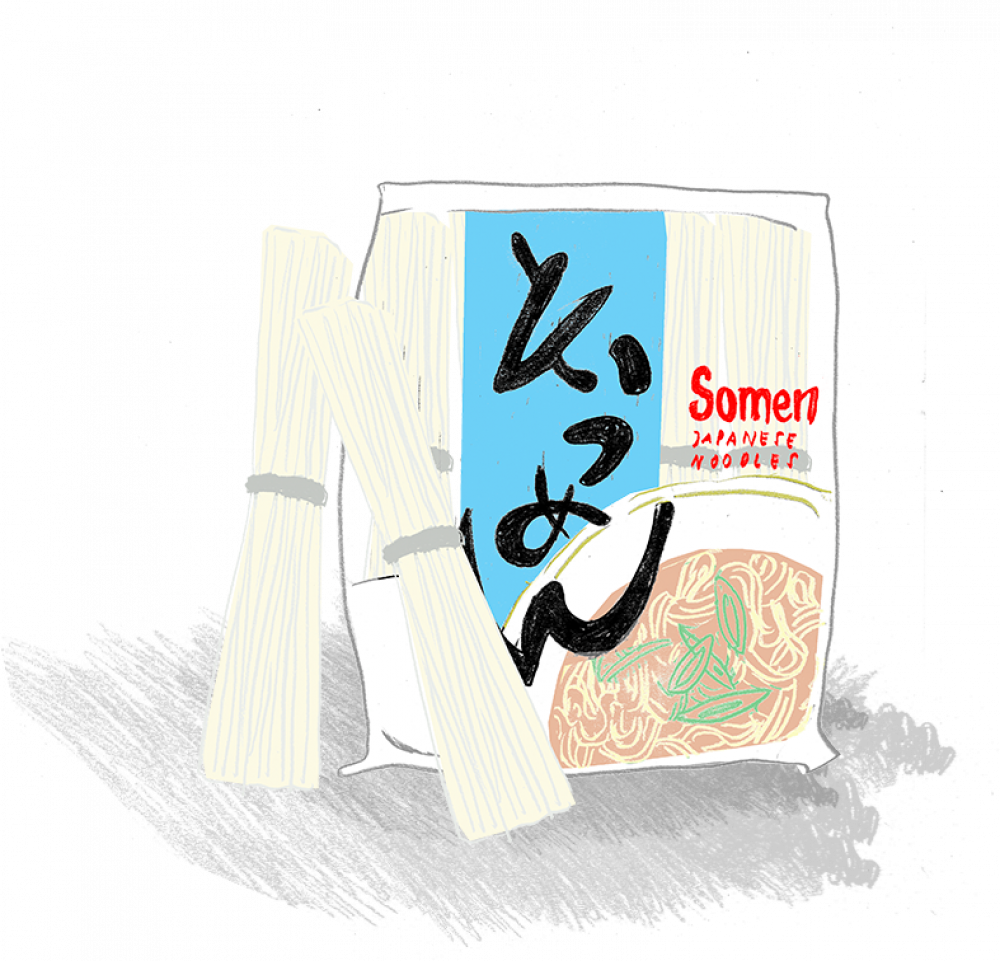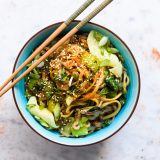Japanese noodles come in varying thicknesses, lengths and textures. Most are wheat-based and cook more quickly than Italian pasta. Some require rinsing after cooking to remove excess starch, and all are cooked without salt. They also should be cooked until tender—not al dente. Tasting for doneness is the best way to know when your noodles are ready.
Illustrations: Tanya Cooper
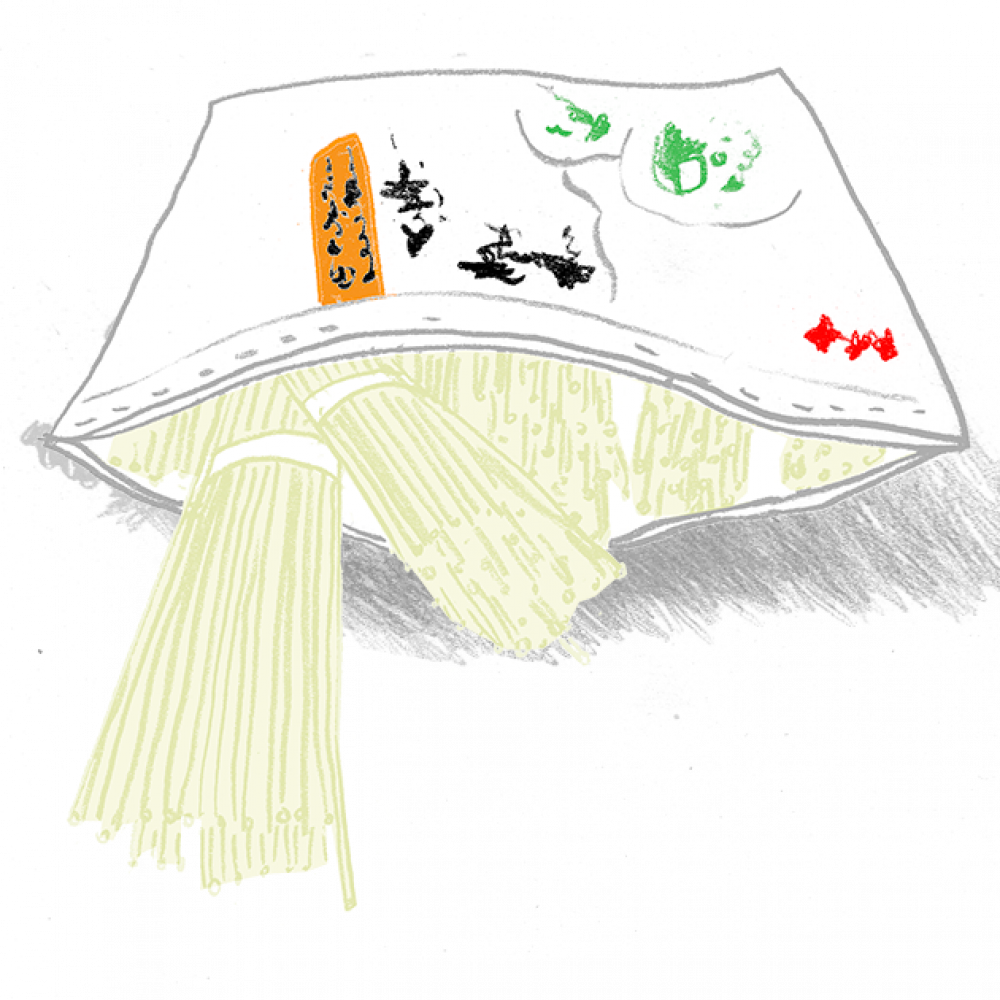
RAMEN
Chewy and stretchy. Made of wheat flour and an alkaline solution called kansui, which gives the noodles their yellow hue. Usually consumed in brothy soups or stir-fried with cabbage, pork and sweet soy glaze. Most commonly sold in the U.S. in instant form, but also available fresh and dried. We prefer dried, non-instant ramen, which typically comes in straight bundles that cook in about 4 minutes. Drain and rinse in cold water, or drain and immediately add to soup.
UDON
Chewy and well-kneaded. Made from wheat flour, water and salt prepared in a variety of thicknesses. Usually served hot in soup, stir-fried or chilled with dipping sauce. Sold dried, frozen and fresh (refrigerated and shelf-stable). We prefer the firm, springy texture of frozen udon. Boil for about 1 minute, then drain and rinse with cold water to stop cooking.
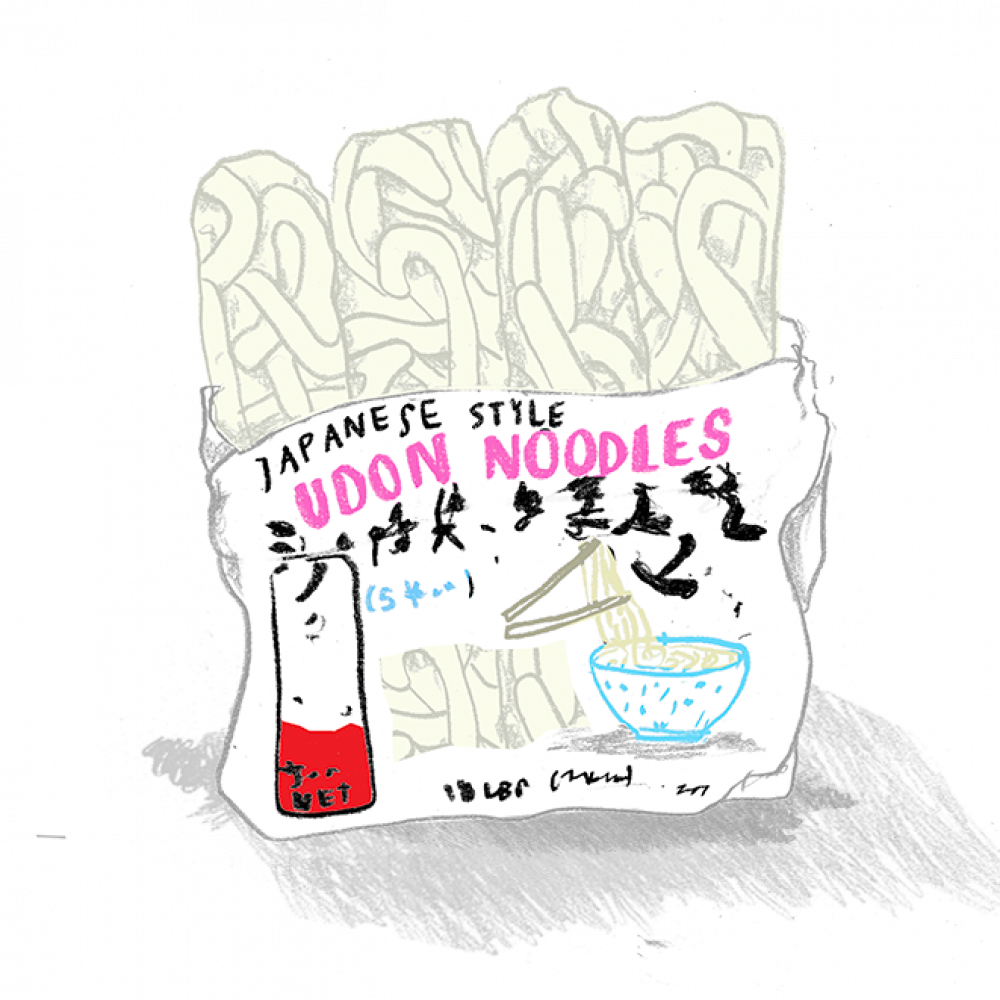
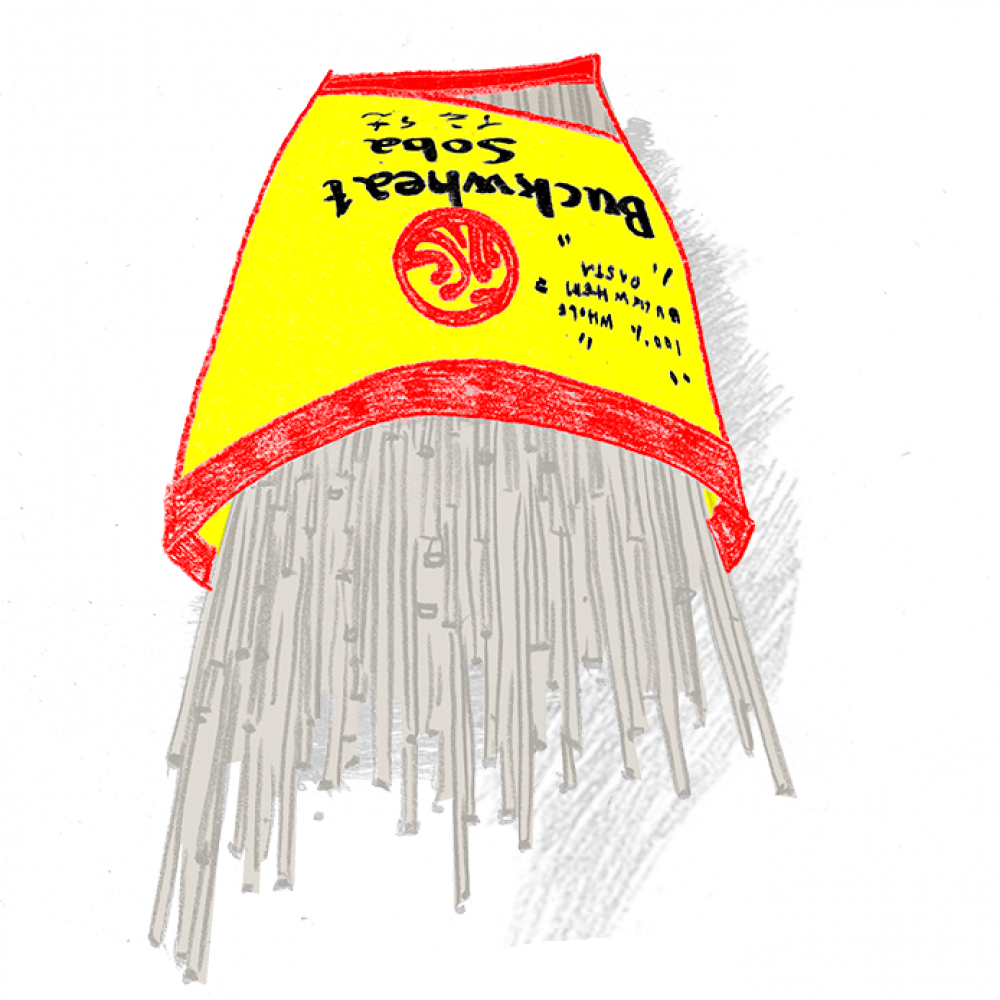
SOBA
Gray-brown and nutty. Made from a blend of buckwheat and wheat flours or all buckwheat. Usually served chilled with a dashi-soy dipping sauce, though we like them in noodle salads. Sold dried and frozen fresh, as a blend or with 100 percent buckwheat, or as pale green cha soba, flavored with matcha tea. We prefer the clean, nutty flavor of dried, 100 percent buckwheat soba. Cook for 7 to 8 minutes, or until tender. Drain and rinse with cold water.
SHIRATAKI
Bouncy, gelatinous and glassy, with little flavor. Made from yam starch, water and pickling lime. Often added to hot pots like sukiyaki, but also used in stir-fries and noodle salads. Most commonly sold refrigerated and packed in liquid. Though they are pre-cooked, the noodles still need to be drained, rinsed and drained again. We prefer to then cook them again in boiling water for about 3 minutes to improve the taste and texture. Drain and rinse with cold water.
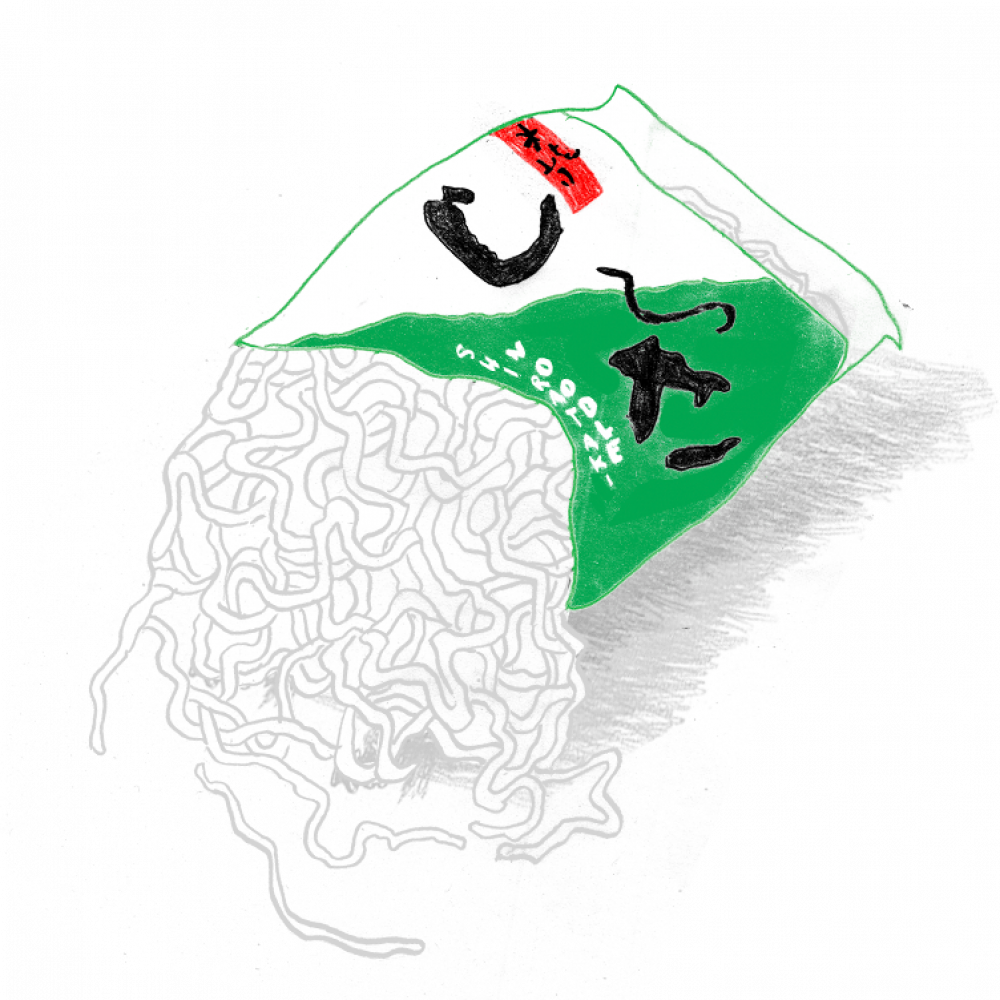
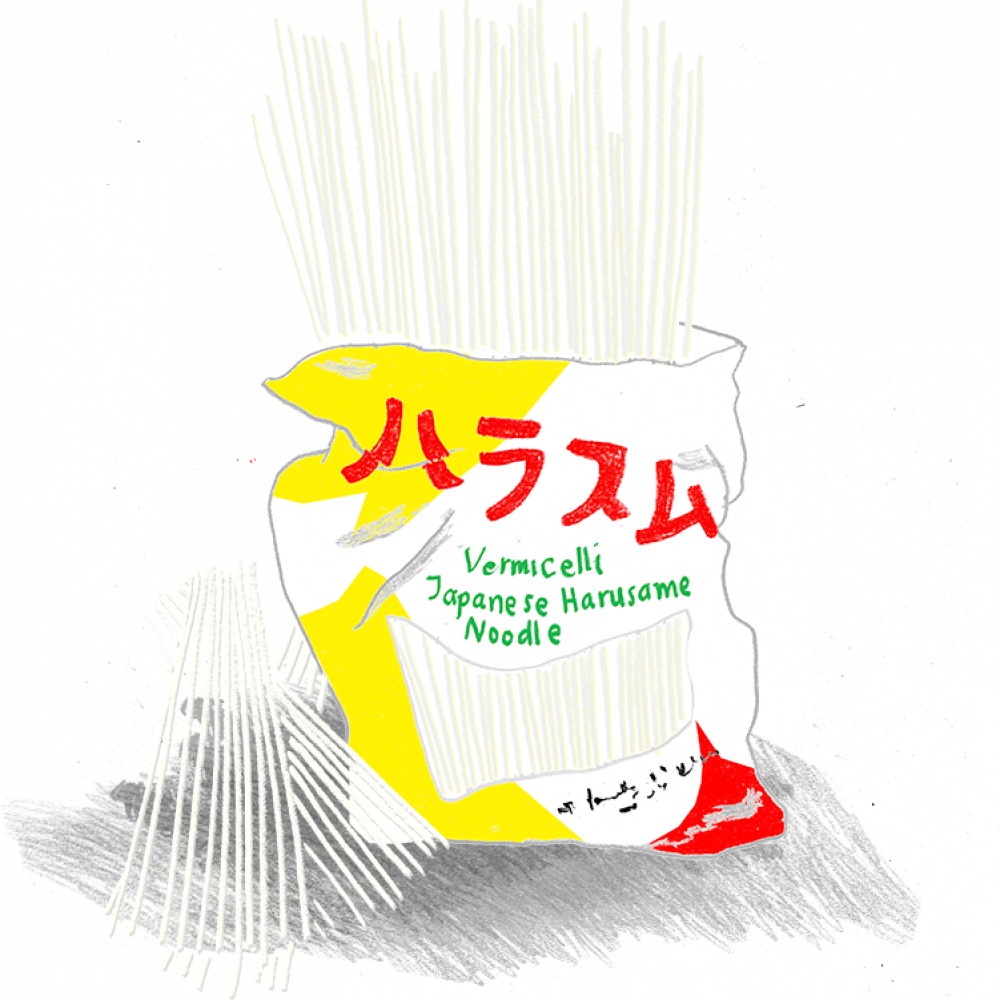
HARUSAME
Chewy, semi-translucent and flavorless. Usually made from a mixture of potato and sweet potato starch and water that's extruded into long, thin threads, then boiled, frozen, thawed and dried. Common in salads and soups, and sometimes finely chopped and used for tempura coating. If noodles are very long and folded, snip into segments at the fold. Cook for about 5 minutes, until tender. Drain and rinse with cold water.
SOMEN
Delicate, pale and thin. Made from wheat flour dough that is oiled, then stretched several times. Usually served chilled in summer months with grated ginger, scallions and dipping sauce. Sold dried, packaged in bundles. Add a bundle to boiling water and cook for 2 or 3 minutes, stirring gently to prevent sticking, then drain and rinse with cold water.
